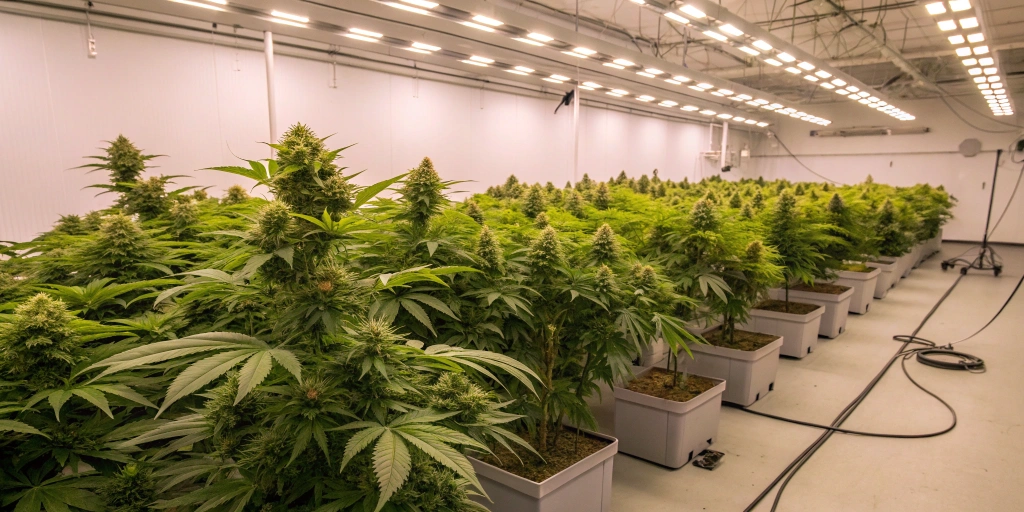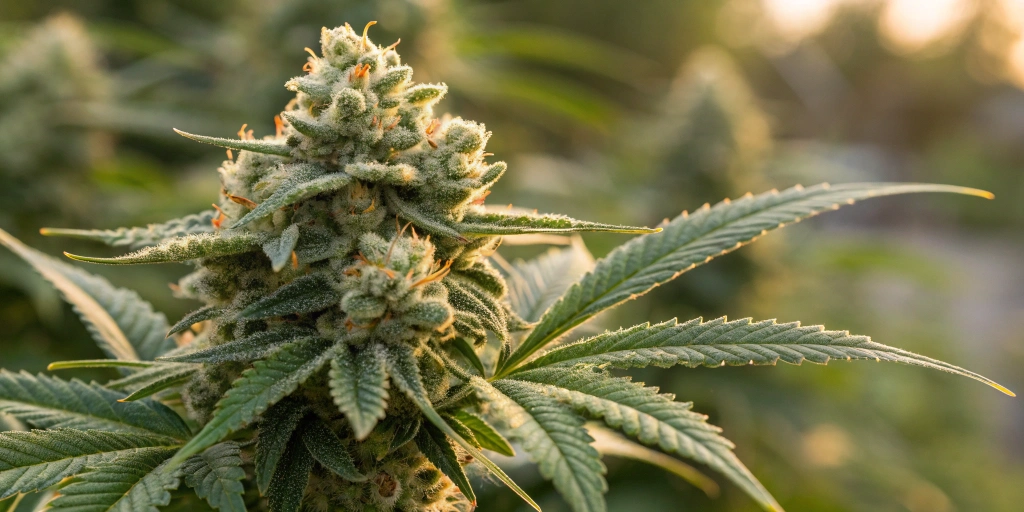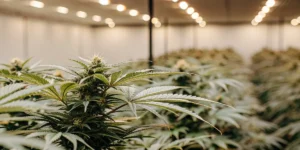Sweet Mango Auto strain: Exceptional Genetics and Effects
Origins and Genetics
Sweet Mango Auto strain originates from a meticulously selected genetic blend that infuses the plant with delightful mango sweetness and a subtle tropical tang. The auto-flowering trait allows it to bloom on its own schedule, making it perfect for growers with limited space. Its compact structure and consistent growth ensure that every cycle produces dense, resinous buds with vibrant flavors and aromas that captivate users.
The stable genetics combine the best qualities of both indica and sativa, yielding a robust plant that thrives in diverse environments. This dependable heritage means each harvest is uniform and impressive, providing a consistent product that appeals to both recreational and medicinal users.
Effects and Potency
Sweet Mango Auto strain delivers a balanced high that gently stimulates the mind while soothing the body. With well-managed THC levels, it produces a clear-headed buzz that sparks creativity without overwhelming sedation. The flavor bursts with sweet mango and subtle citrus notes, accompanied by a hint of spice that makes each puff refreshing and unique.
Users report that Sweet Mango Auto strain offers a smooth, enjoyable high ideal for daytime activities as well as early evening relaxation. The well-rounded potency combined with its aromatic profile makes it a favored choice among those seeking a balanced, flavorful experience in every session.
Environmental Requirements for Growing Sweet Mango Auto strain
Setting Up the Growing Cannabis Space
Creating an optimal grow space is essential for cultivating Sweet Mango Auto strain. Use a clean, organized area with proper ventilation, controlled lighting, and stable temperature and humidity to support natural growth. Whether you use a dedicated room, a grow tent, or a small indoor setup, ensure the space is equipped with essential tools such as fans, carbon filters, and timers. A well-arranged environment reduces stress and promotes vigorous development.
A properly planned space maximizes light distribution and airflow, making routine tasks like watering and monitoring simpler. With every element in place, ultimately yielding high-quality, aromatic buds that reflect your careful attention and expertise.
Temperature and Humidity
Maintain temperatures between 70°F and 80°F during vegetative growth and slightly lower during flowering to enhance resin production. Keep humidity at around 50–60% early on and reduce it to 40–50% during flowering to prevent mold, ensuring the plant absorbs nutrients efficiently.
Indoor Cannabis Cultivation
Advantages of Growing Indoors
Indoor cultivation offers complete control over environmental factors, which benefits Sweet Mango Auto strain immensely. Growing indoors shields the plant from unpredictable weather and pests while allowing you to fine-tune light, temperature, and humidity conditions for optimal bud formation. Every variable—from nutrient delivery to airflow—is precisely managed, resulting in uniform, high-quality buds even in limited spaces.
The predictability of indoor growing allows for year-round production, independent of seasonal changes. Whether in a compact room or a dedicated grow space, indoor setups help maximize the potential of Sweet Mango Auto strain, producing robust plants and consistently impressive yields. This method is also ideal for growers working with white cannabis seeds, ensuring that even delicate or less common seed types can thrive under optimal and controlled conditions.
Lighting Needs
Full-spectrum LED or HPS lights are essential for indoor cultivation, as they provide the energy needed for vigorous vegetative growth and potent bud development during flowering. Position the lights at an optimal distance from the canopy to ensure even distribution without causing heat stress, promoting efficient photosynthesis and maximizing the quality of Sweet Mango Auto strain.

Outdoor Cannabis Cultivation
Best Conditions for Outdoor Growth
Outdoor cultivation thrives in sunny, warm conditions with plenty of natural airflow. Choose a location that receives at least six hours of direct sunlight daily to enhance terpene production and intensify the strain’s sweet mango flavor. Ensure that the soil is well-draining and enriched with organic matter to support vigorous growth and high yields.
A favorable outdoor setup includes selecting a site that provides protection from extreme weather, such as heavy winds or intense rain, while still offering ample sunlight. With careful site selection and proper management, outdoor growers can achieve impressive results that match or even exceed indoor yields.
Advantages of Growing Sweet Mango Auto strain
Growing offers many benefits, especially for cultivators with limited space. Its auto-flowering trait makes the plant easy to manage, while its rapid growth cycle ensures that you can harvest multiple crops in a single year. The strain produces dense, resinous buds that are rich in flavor and potency, making it a practical choice for urban growers.
Moreover, the consistent quality and predictable yield of Sweet Mango Auto strain make it an attractive option for both beginners and experienced growers. Its balanced nature and appealing flavor profile ensure that every harvest is rewarding and that each session delivers a smooth, enjoyable high.
Problems in Cultivating Sweet Mango Auto strain
Overwatering
Overwatering is a common pitfall that can damage the delicate root system of Sweet Mango Auto strain. Excess moisture leads to root rot and fungal infections that stunt growth and lower yields. It is essential to allow the soil to dry slightly between waterings and to use containers with proper drainage to maintain optimal moisture balance.
Pest Infestations
Pests such as spider mites, aphids, and thrips can quickly harm Sweet Mango Auto strain if not controlled. Regular inspections and the use of organic pest control measures help keep these threats in check. Early detection and prompt treatment are vital to preventing infestations that could compromise both yield and bud quality.
Similar Strains
Lemon Twist Auto
Lemon Twist Auto is an auto-flowering strain known for its bright, tangy lemon flavor with a subtle hint of sweetness. It produces dense, resinous buds and offers a balanced high that energizes the mind and relaxes the body, making it a great alternative to Sweet Mango Auto strain.
Citrus Pop Auto
Citrus Pop Auto bursts with explosive citrus flavors, combining lively lemon and vibrant orange notes. Its rapid flowering cycle and thick, aromatic buds deliver a refreshing, clear-headed high that is similar to the enticing profile of Sweet Mango Auto strain.
Tropical Zest Auto
Tropical Zest Auto is celebrated for its exotic blend of tropical fruit and citrus flavors, resulting in a uniquely invigorating aroma. With a fast flowering cycle and abundant resin production, it provides a balanced high that is both uplifting and soothing, appealing to those who enjoy the dynamic taste and effects of Sweet Mango Auto strain.
Week-by-Week Growth Plan for Sweet Mango Auto strain
Week 1 – Germination and Seedling Stage
Begin by soaking Sweet Mango Auto strain seeds in water, then place them between moist paper towels in a warm, dark area until taproots emerge; gently transfer them into small pots with well-draining medium while ensuring constant warmth and humidity to build a robust root system.
Week 2 – Early Seedling Growth
In the second week, the seedlings start to show their first true leaves and gradually increase in size. Provide gentle, indirect light and keep the soil consistently moist yet not waterlogged, setting a stable environment that promotes healthy initial growth.
Week 3 – Continued Seedling Development
During week three, the seedlings expand further and develop a more extensive root system, with additional leaves emerging. Gradually increase light exposure and maintain a balanced watering schedule to support steady development and strengthen the plant’s structure for future growth.
Week 4 – Vegetative Growth Begins
At the beginning of week four, Sweet Mango Auto strain enters the vegetative phase, with noticeable increases in size and vigor as leaves expand and stems thicken. Adjust light intensity and begin a structured watering regimen with low-dose nitrogen fertilizer to stimulate rapid vegetative growth.
Week 5 – Accelerated Vegetative Growth
In week five, vegetative growth accelerates, and the plant produces abundant foliage and stronger branches. Continue regular feeding, maintain a steady watering schedule, and apply low-stress training to promote even canopy development and prepare for a robust flowering phase.
Week 6 – Preparing for Flowering
During week six, early signs of flowering appear as small buds form and leaf coloration subtly changes. Adjust nutrients by reducing nitrogen and increasing phosphorus and potassium, and continue low-stress training while closely monitoring conditions to ensure the plant remains stress-free.
Week 7 – Transition to Flowering
Week seven marks the shift to the flowering phase; switch indoor growers to a 12/12 light cycle, prompting the plant to direct energy toward bud production. Small buds emerge as nutrient schedules shift to favor bloom-specific supplements and stable conditions minimize stress.
Week 8 – Early Flowering
In week eight, early flowering becomes more pronounced as buds form and increase in density. The plant channels energy into thickening bud clusters, while nutrient delivery is fine-tuned to support this phase, ensuring optimal bud development without signs of deficiency.
Week 9 – Mid-Flowering
During week nine, buds become prominent with increased resin production as trichomes transition from clear to milky. Adjust nutrient management to support robust bud growth while avoiding burn, and conduct frequent inspections to maintain optimal environmental conditions.
Week 10 – Bud Development
In week ten, buds are well-formed and continue maturing in density and size, with intensified resin production and a more pronounced aromatic profile. Maintain steady nutrient management and consistent environmental conditions to ensure each bud reaches its optimal potential for quality and potency.
Week 11 – Late Flowering
During week eleven, the plant enters late flowering, and trichomes begin to show hints of amber while buds become denser and more resinous. Continue balanced nutrient delivery and stable conditions to support the final maturation burst, with regular checks addressing any issues before harvest.
Week 12 – Harvesting Time
In week twelve, Sweet Mango Auto strain is ready for harvest as trichomes display a mix of milky and amber hues and the buds are dense and resinous. Carefully cut the plant, trim excess foliage, and hang branches in a dark, well-ventilated area to dry for 7–10 days, preserving flavor and potency.
Week 13-14 – Curing the Buds
During weeks thirteen and fourteen, focus on curing the harvested buds by transferring them into airtight glass jars after proper drying. Open the jars daily during the first week to release excess moisture, gradually reducing the frequency. This careful curing process allows the buds to stabilize and develop a smoother, richer profile, yielding a premium final product.

FAQs about Sweet Mango Auto strain
What is the typical THC content of sweet mango auto strain?
Sweet Mango Auto strain typically contains THC levels ranging from 15% to 22%, offering a balanced high that delivers an uplifting, clear-headed buzz paired with gentle relaxation. This consistent potency is achieved through meticulous breeding and careful cultivation practices that ensure each harvest meets high quality standards and provides a refreshing, satisfying experience for both recreational and medicinal users.
How long does it take for sweet mango auto strain to flower?
Sweet Mango Auto strain generally flowers within eight to ten weeks after switching to a 12/12 light cycle, providing a relatively short flowering period that is ideal for quick turnovers and efficient production. The auto-flowering trait ensures a smooth transition from vegetative growth to bloom, resulting in consistent yields and making it especially attractive for cultivators with limited space or time who desire rapid harvest cycles.
What flavor profile can I expect from sweet mango auto strain?
Sweet Mango Auto strain offers a delightful flavor profile characterized by a sweet, tropical mango taste combined with subtle hints of citrus. The aromatic buds deliver a refreshing, smooth flavor that enhances its balanced, uplifting high, providing an enjoyable sensory experience. Users appreciate its unique, refreshing taste that sets it apart from other strains and makes every session both invigorating and memorable.





